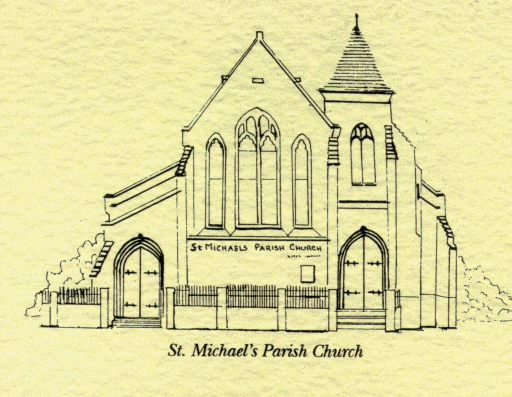A memorial book which lists the First World War killed and wounded from streets around the Shankill Road area of Belfast reveals the terrible impact on families in a small community.
The book was found by chance at a military memorabilia stall in south Belfast in 1998 and given to Centenary News reader Ed Spence, a member of the congregation of St. Michael’s Church which stands 50 metres from the main Shankill Road.
There are more than 800 names on the roll which was first printed on 3rd July 1921. But it is when the list of 133 dead from the parish is examined more closely that the reality of the sacrifice in just one small community is brought home.
Brothers
The McDowells of 13 Malvern Place lost four family members in the war – a father and three sons, William James, John and Henry.
Down the street, Edward, Thomas and Moffatt Brown at number 45 went to war but Edward did not come back.
There are other tragedies in the roll. The three Bradley brothers in McTier Street were killed and the Cairns family from Mayo Street also lost three brothers as did the Weir family of 97 Enfield Street, losing Albert, Robert and John.
Sacrifice
In an introduction to the roll Ed has written: “It is fitting and altogether proper that this little booklet has been reproduced in modern form as a reminder of the awful price in human sacrifice that this little enclave has paid in the pursuit and defence of freedom.
“The reader will be shocked, angered and deeply saddened over the familiar names and streets that simply jump out at you as you pore over this litany of sacrifice.
“The overwhelming enormity impacting on such a small close-knit community was catastrophic. Husbands, fathers, sons, brothers, uncles, cousins and sweethearts, all gone forever.”
Somme
Ed, who grew up in Joseph Street, two streets away from the church, told Centenary News: “Though I was born in 1944, the years beforehand are unfortunately not even a memory.
“We learned of the Somme and the Great War from our dads and grandads and others around us, however those who fought during those war years were always reluctant to speak of the war or what they had to endure in the trenches.
“It was only after I was given a copy of the St Michael’s fallen that I learned of the many dead, wounded and POWs from the parish.
Explaining that the paper was old and stained, Ed continued: “I then sat down one day, or days, and transposed the names into a spread sheet to make it easier to check out the various streets that each came from. The old paper sheet wasn’t in alphabetical names. Each was added when news filtered through of each tragedy.
Hermit
“It was then on reading those names that in later life I came to recognise just what one old neighbour who was called Herbie McDowell and lived in Malvern Place, directly at the top of Joseph Street, had been going through after the war.
“As youngsters we only thought that he was an old hermit as his front door was constantly shut, with the curtains always drawn closed as well.
“The only time we saw him was when we played football at his door, as there was a gas lamp outside which was used as one of our goalposts. He would then just peep round the door to tell us to move away.
“In fact we were always heart scared off him because of this and as kids little did we understand then what he might have been going through.
“Perusing the names on the St Michael’s war sheet many years later he had in fact lost his dad and three brothers during the Great War.”
Many of the streets around the church were demolished in the 1970’s but the memory of the fallen is being preserved in a specially bound copy of the roll which Ed has presented to the church.
It is placed on a table at the entrance porch for all to see. “So in one small but reverend wee way the St Michael’s parishioners can turn the pages and remember all those men from their immediate area who gave their lives and made the supreme sacrifice for our freedom during 1914-1918,” Ed said.
Posted by Mike Swain, Centenary News
Information and images from Ed Spence.
